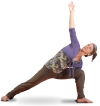Ballroom
Articles
Coming Next:
Sorry - the next issue will be delayed well into July.
Again we will talk about fitness training for dancers:
Bend it – backwards! Muscles for Dancers: Training the back.

”The human body is made of water“ – well, almost: water accounts for about 60% of the body weight.
Already a loss of water equivalent to 10% of the body weight is dangerous ...
Guest writer Dr. Erik Wischnewski on diet in competition dancing.
... or Why It Makes Sense For Dancers To Climb Trees.
The classical tree posture in yoga is about keeping a swaying or - in this case - dancing body in balance.
Guest writer Lubosch Bublák on Ashtanga-Yoga in competition dancing.
Tango Argentino: A code of conduct for real men, a concertina made in Germany, and a couple of dancing steps – this can’t be all, can it?
©: Ballroom Website, 2011
Updated: 06.07.2011







































